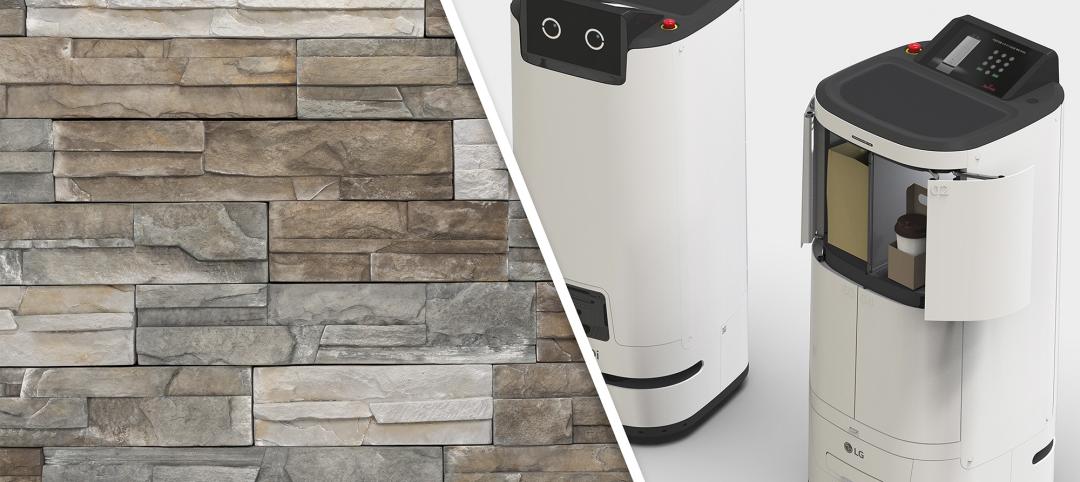Grumman/Butkus Associates, a firm of energy efficiency consultants and sustainable design engineers, has released the results of its 2015 Hospital Energy and Water Benchmarking Survey, focusing on healthcare facilities’ resource usage trends and costs for calendar year 2014.
Since the survey was initiated 20 years ago, hospitals’ overall fossil fuel use has trended downward, but electricity use isn’t declining much. The average combined Btu/sf for facilities in the survey (electricity plus gas/steam) was 232,981 in CY2014, compared with 248,456 in the 2014 survey (CY2013). Harsher winter temperatures in 2012-13 compared with 2013-14 likely had something to do with the usage decline.
Square-foot prices for gas/steam were up year-to-year ($1.01 in 2013, vs. $1.16 in 2013), but square-foot prices for electricity fell ($2.26 in 2013 vs. $2.12 in 2014). The overall result of these usage and pricing patterns was that hospitals’ total sf costs for energy (gas/steam plus electric) hardly changed: $3.29 in CY2014, vs. $3.27 in CY2013.
Carbon footprint results have stayed fairly steady over time, at about 60 pounds of CO2 equivalent per ft2 per year, but have been slowly trending downward since 2010.
Reporting facilities displayed a range of usage patterns. For instance, some participants are using more than 200,000 BTU/ft2 in fossil fuel annually, compared with a general mid range of facilities (about 150,000 BTU/sf/year) and those that used least (100,000 BTU/sf/year). Similarly, a few hospitals consume more than 40 kWh/sf/year in electricity, compared with a mid-range of about 25 kWh/sf/year. A few squeaked by with less than 20 kWh/ft2.
“Hospitals are investing in efficiency measures and making progress, but have much further to go,” says G/BA Chairman Daniel L. Doyle. “Some of the low-hanging fruit is gone, but there are still many cost-effective opportunities remaining for reducing energy usage and costs.”
Hospital water use is also gradually declining, currently averaging about 49 gallons per square foot per year (compared with nearly 70 gallons/sf/year a decade ago). Costs per gallon are rising, however, now averaging $0.38/sf. As recently as 2007, hospitals were paying just $0.27/sf.
“The downward usage trend reflects a movement to eliminate city-water-cooled equipment, as well as the increased use of low-flow and occupancy-based plumbing fixtures,” says Doyle. “Water usage is an emerging issue. There is still much room for improvement.”
The G/BA survey has provided a free annual benchmarking resource since its initial release in 1995. Hospitals are invited to participate without charge by submitting responses to a short list of questions. Information for this edition was provided by 117 hospitals located in Illinois (56), Wisconsin (33), Michigan (5), Indiana (5), and seven other states.
Full results and analysis, as well as information about participating in the 2015 survey, are available at the firm’s website. For additional information, contact Doyle (ddoyle@grummanbutkus.com) or Julie Higginbotham (jhigginbotham@grummanbutkus.com).
Related Stories
Curtain Wall | Aug 15, 2024
7 steps to investigating curtain wall leaks
It is common for significant curtain wall leakage to involve multiple variables. Therefore, a comprehensive multi-faceted investigation is required to determine the origin of leakage, according to building enclosure consultants Richard Aeck and John A. Rudisill with Rimkus.
Sponsored | Healthcare Facilities | Aug 8, 2024
U.S. healthcare building sector trends and innovations for 2024-2025
As new medicines, treatment regimens, and clinical protocols radically alter the medical world, facilities and building environments in which they take form are similarly evolving rapidly. Innovations and trends related to products, materials, assemblies, and building systems for the U.S. healthcare building sector have opened new avenues for better care delivery. Discussions with leading healthcare architecture, engineering, and construction (AEC) firms and owners-operators offer insights into some of the most promising directions. This course is worth 1.0 AIA/HSW learning unit.
Products and Materials | Jul 31, 2024
Top building products for July 2024
BD+C Editors break down July's top 15 building products, from Façades by Design to Schweiss Doors's Strap Latch bifold door.
Smart Buildings | Jul 25, 2024
A Swiss startup devises an intelligent photovoltaic façade that tracks and moves with the sun
Zurich Soft Robotics says Solskin can reduce building energy consumption by up to 80% while producing up to 40% more electricity than comparable façade systems.
Great Solutions | Jul 23, 2024
41 Great Solutions for architects, engineers, and contractors
AI ChatBots, ambient computing, floating MRIs, low-carbon cement, sunshine on demand, next-generation top-down construction. These and 35 other innovations make up our 2024 Great Solutions Report, which highlights fresh ideas and innovations from leading architecture, engineering, and construction firms.
Healthcare Facilities | Jul 22, 2024
5 healthcare building sector trends for 2024-2025
Interactive patient care systems and trauma-informed design are among two emerging trends in the U.S. healthcare building sector, according to BD+C's 2024 Healthcare Annual Report (free download; short registration required).
Healthcare Facilities | Jul 18, 2024
Why decarbonizing hospitals smartly is better than electrification for healthcare design
Driven by new laws, regulations, tariffs, ESG goals, and thought leaders in the industry itself, healthcare institutions are embracing decarbonization to meet 2050 goals for emissions reductions.
Healthcare Facilities | Jul 16, 2024
Watch on-demand: Key Trends in the Healthcare Facilities Market for 2024-2025
Join the Building Design+Construction editorial team for this on-demand webinar on key trends, innovations, and opportunities in the $65 billion U.S. healthcare buildings market. A panel of healthcare design and construction experts present their latest projects, trends, innovations, opportunities, and data/research on key healthcare facilities sub-sectors. A 2024-2025 U.S. healthcare facilities market outlook is also presented.
Healthcare Facilities | Jul 11, 2024
New download: BD+C's 2024 Healthcare Annual Report
Welcome to Building Design+Construction’s 2024 Healthcare Annual Report. This free 66-page special report is our first-ever “state of the state” update on the $65 billion healthcare construction sector.
Healthcare Facilities | Jun 18, 2024
A healthcare simulation technology consultant can save time, money, and headaches
As the demand for skilled healthcare professionals continues to rise, healthcare simulation is playing an increasingly vital role in the skill development, compliance, and continuing education of the clinical workforce.


















